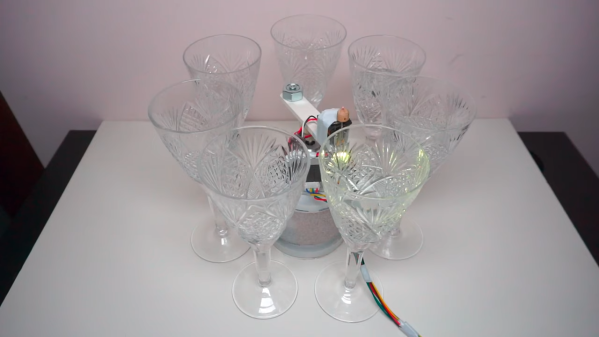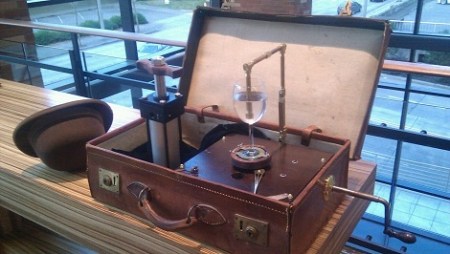Have you ever been on a city street and seen a busker playing music on glasses? Each glass has a different amount of water and produces a different note when tapped. [Cyberlab] must have seen them and created an Arduino robot to play tunes on glasses. You can see the result in the video below.
If we had done this, we might have had a solenoid per glass or used some linear component like a 3D printer axis to pick different glasses. [Cyberlab] did something smarter. The glasses go in a circle and a stepper motor points at the correct glass and activates a solenoid. The result is pretty good and it is a lot simpler than any of our ideas.
If you aren’t musically inclined, you might wonder how you’d program the songs. There’s an example of taking a music box score from a website — apparently, there are lots of these — and removing any polyphony from it. The site mentioned even has an editor where you can import MIDI files and work with them to produce a music box strip that you could then convert. Then you encode each note as a number from 0 to 6.
Of course, you also have to fill your glasses with the right amount of water. A piano tuning phone app should be useful. We’ve seen this done in a linear fashion before. You can even use a single glass for many notes with a little ingenuity.














